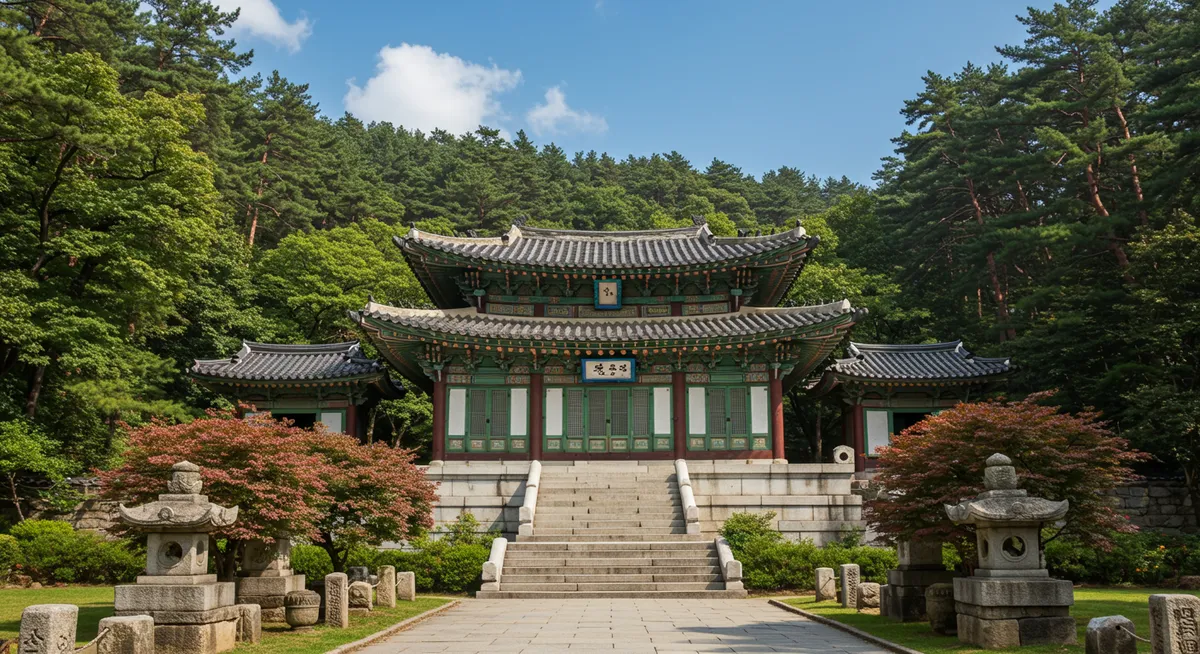Your Essential Guide to Gyeongju's UNESCO World Heritage Sites
As someone who has extensively traversed South Korea's ancient capitals, I can confidently say that Gyeongju stands out as an unparalleled open-air museum. Once the magnificent capital of the Silla Kingdom, this city offers a captivating journey through time, brimming with majestic temples, royal tombs, and serene palace grounds. For any traveler eager to delve into Korea's profound past, a comprehensive Gyeongju historical sites guide is absolutely essential to navigate its rich and fascinating heritage. Discover the best local cuisine with our Gyeongju food guide. Enhance your Gyeongju experience with our Gyeongju itinerary.
Bulguksa Temple & Seokguram Grotto: UNESCO Gems
Plan this trip faster with our free online itinerary maker. Get a personalized day-by-day plan in minutes.
To truly begin exploring Gyeongju's profound heritage, one must visit the iconic Bulguksa Temple and Seokguram Grotto, both designated UNESCO World Heritage sites. These architectural masterpieces of Silla Buddhist art, consequently, offer unparalleled insight into Korea's spiritual past. Bulguksa’s intricate wooden structures and famous stone pagodas, notably Dabotap and Seokgatap, exude ancient grandeur. For a tranquil experience, I always recommend arriving early in the morning, ideally before 9 AM, especially during peak season, to fully soak in the peaceful ambiance. This essential Gyeongju historical sites guide emphasizes their pivotal role. Furthermore, you can discover the best time to visit Gyeongju to maximize your overall experience at these revered locations, ensuring ideal weather and fewer crowds. Organize your journey with our comprehensive Gyeongju itinerary.
Exploring the Daereungwon Tomb Complex & Cheomseongdae Observatory
Central to any Gyeongju historical sites guide are the Daereungwon Tomb Complex and Cheomseongdae Observatory, both easily accessible within the city center. Daereungwon, home to over 20 large royal tombs, offers a unique glimpse into Silla burial practices, with Cheonmachong Tomb being particularly notable for its preserved artifacts. Strolling through the vast grass mounds, you truly feel the weight of history. Nearby, the ancient Cheomseongdae Observatory stands as Asia's oldest surviving astronomical observatory, a testament to Silla's advanced scientific knowledge. I always suggest visiting these sites together; moreover, their proximity allows for a relaxed walk between them. They are undeniably Gyeongju's must-see attractions for history buffs. Create your ideal travel schedule with our Gyeongju itinerary. Get deeper into gyeongju via Gyeongju gyeongju guide.
Donggung Palace, Wolji Pond & Serene Night Views
For a truly magical experience within your Gyeongju historical sites guide, visit Donggung Palace and Wolji Pond (formerly Anapji). This scenic complex served as a royal villa for banquets and leisure during the Silla period. While beautiful during the day, it truly transforms after dusk when the meticulously recreated structures and trees are illuminated, casting stunning reflections on the pond. It’s an ethereal scene that I consider a Gyeongju highlight, perfect for capturing breathtaking photographs. Plan your visit to coincide with sunset to witness this dramatic transformation. This site often forms a key part of any Gyeongju itinerary, offering a peaceful end to a day of exploration. Enhance your Gyeongju experience with our Gyeongju itinerary.
Practical Tips for Your Gyeongju Historical Exploration
To maximize your Gyeongju historical sites guide experience, consider some practical advice. Firstly, while many central sites are walkable, a local bus or taxi is convenient for reaching places like Bulguksa and Seokguram. Consider purchasing a Gyeongju City Tour Bus pass for efficient travel between major attractions. Secondly, layering clothing is wise, especially when visiting during spring or autumn, as temperatures can fluctuate. My personal tip: wear comfortable shoes, as you’ll be doing a lot of walking across uneven historical grounds. Furthermore, for those planning a multi-day trip, consulting a detailed Gyeongju 2-day itinerary can significantly enhance your exploration of these magnificent historical treasures.
Frequently Asked Questions
What's the best way to get around Gyeongju's historical sites?
How much time should I allocate for visiting the main historical sites?
Are there combined tickets available for Gyeongju's attractions?
In conclusion, exploring Gyeongju's ancient treasures is an immersive journey into South Korea's rich heritage. From the spiritual majesty of Bulguksa to the mysterious royal tombs of Daereungwon and the enchanting nightscapes of Wolji Pond, each site offers a unique narrative of the Silla Kingdom. This Gyeongju historical sites guide provides the groundwork for an unforgettable adventure. By understanding their significance and planning your visit effectively, you are poised to discover why Gyeongju truly is a living museum. Embark on your historical exploration and witness the timeless beauty of this remarkable city firsthand! Keep exploring Gyeongju: Gyeongju planning guide.
